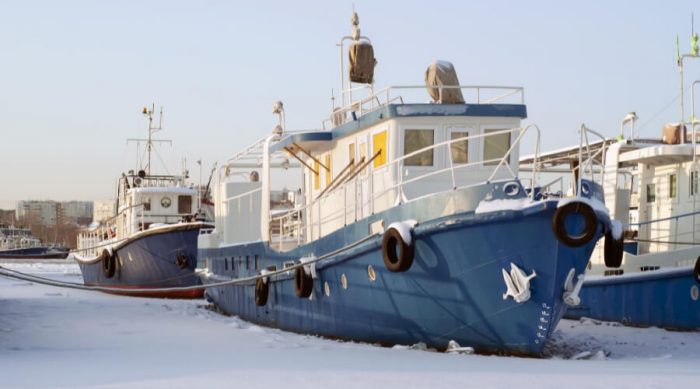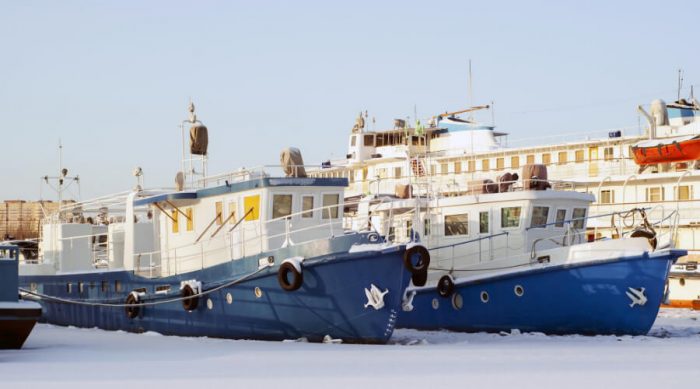Tugboats are small boats made of engines that are as powerful as 6500hp. Even though the ship is way bigger than a tugboat, its engines are just around the same size, making it possible for a tugboat to tow a ship.
Key Takeaways
- Tugboats come in various engine sizes so the number that can pull or push a ship depends on the engine size
- Tug boats are robust, with most having a power that ranges between 680hp to 3400hp
- The bigger the tugboats, their ability to operate at a low speed when getting in port has become complex
- Depending on the ship size and bow thruster of sufficient power, one tugboat is enough for berthing and unberthing a ship
- You can classify tugboats based on usage, designs, the configuration of the propeller, etc.
How Do Tug Boats Work?

Without the help of tug boats, mega-ships cannot dock and undock with ease. They are used because of their ability to maneuver easily in the water due to their small size. Big ships have trouble maneuvering, so these tug boats make this easier for them. Tug boats are robust, with most having a power that ranges between 680hp to 3400hp. Larger ships with heavier workloads have engines that can get up to 2700hp.
Tug boats work by maneuvering easily in narrow water bodies; no wonder they are mainly used to dock and undock. The more ships grew in size, their ability to operate at a low speed when getting in port has become complex, especially in crowded harbors.
For this reason, companies that manufacture tug boats are careful not to increase their size so much as to be a hindrance to their work. They make the engines more powerful while trying not to alter so much with the size.
Methods Used For Maneuver A Ship
There are various common methods of maneuvering a ship using tug boats.
1. Swinging
The ship can be swung bow to the harbor with the help of two tugboats, the starboard tug and after tug, which pushes the starboard bow and port quarter, respectively. Also, three tugboats can be used, two pushing and one pulling, to make a swing.
2. Single Tug Maneuvers
Ships fitted with controllable pitch propellers can either be maneuvered using only one tugboat or non at all. Depending on the ship’s size and bow thruster of sufficient power, one tugboat is enough for berthing and unberthing a ship.
3. Berthing
Forward and after tugboats are constantly controlled to ensure that the ship is parallel to the jetty. Tugboats are made to have the speed to avoid contact with the jetty, and they will push until the vessel is made fast.
4. Unberthing
To unberth a ship from the harbor, the vessel should be pulled parallel to the berth while ensuring that it does not come into contact with the jetty. After removal from the dock, preparation to swing it can be made.
Factors To Consider When Deciding The Number Of Tugboats

Several factors have to be considered when determining the number of tugboats, including:
1. Prevailing Weather Conditions
Wind and current affect the number of tugboats used to tow a ship. The direction and angle where wind and current will be coming from and acting on the ship’s hull. The window force area and underwater areas are calculated to get the effect of wind and current accurately.
2. Port Regulations
The port regulations always have to be put into consideration. Some rules are based on the gross tonnage of the vessel that is being handled. Other port regulations focus on the length overall of the ship.
Secondary Uses Of Tugboats
1. They can help in firefighting activities in the port by bringing accessories for the same purpose.
2. Tugboats are acting as salvage boats and icebreakers. They help move vessels that cannot move, for instance, disabled ships or those that ought not to move.
3. They are the savior boats, for instance, in narrow canals. Ships can move forward and backward in the open sea but have trouble sideways, which harbors require.
Classification Of Tugs
1. Tugboats can be classified in terms of usage
Escort tugs- such tugboats are made to help maneuver vessels in the water and escort them to their destination.
Support tugs- these tugboats provide support services and towing operations.
2. Classification based on design:
Conventional Tug
This is the oldest design of tugboats used since the idea of using tugboats came into being. Although it is used in many ports around the world, it isn’t easy to maneuver. The ones that are currently used have one or two propellers. The ones with one propeller are further divided into the conventional left-handed tug and the conventional right-handed tug. Right-handed conventional tugs are preferred since they are reliable. The features of conventional tugboats include a classic rider, a towing hook, power plant complex in its stern.
3. Classification Based On The Configuration Of Propeller
Tractor Tug
The tractor tug uses a 2-multidirectional propulsion unit. This unit will provide excellent maneuverability when used by the right person because the thrust units can be put side by side. Propulsion units can give maximum output when the towing point is placed near the stern. There is a creation of a positive turning point because the thrust is outside the towing point. The rotating disc decides the magnitude of the force of thrust. The tug’s towline enhances its versatility, and they are the most widely used due to its maneuverability.
Advantages
1. They are highly maneuverable.
2. They have a rapid power-on response time.
3. These tugs provide full thrust over 360°.
4. They are adaptable to repositioning swiftly when needed.
5. Simple control systems.
6. Low risk of capsizing.
7. They have extraordinary performance and are fast.
8. They can work sideways effectively.
9. Their operational capability in restricted areas is improved.
10. A rudder is not essential, as the tugboat can be operated without it.
Disadvantages
1. The repair and maintenance are expensive.
2. Capital investment is high.
3. They have relatively less bollard pull.
4. The conventional tug master has to be retrained to maximize the potential of the tug.
5. It can potentially get damaged when alongside a ship.
Screw Propeller
Screw propellers are diesel-driven and are classified as single-screw tug, twin-screw tugs, and triple-screw tugs. The propeller is fixed, with movable rudders.
Advantages
1. These tugboats are self-sufficient.
2. Construction and maintenance cost is low.
3. Towing is efficient.
4. The operation cost is low.
Disadvantages
1. These tugs are unidirectional.
2. They are relatively less stable.
3. They can only be used for small and medium boats.
4. Slow repositioning.
5. The probability of capsizing is high.
6. They have low values of astern power.
Azimuthal Stern Drive tugs
These are the result of blending conventional tugs and tractor tugs; thus, it utilizes the benefits of both. This tugboat may have two towing locations.
Advantages
1. They have better stability, even on speed.
2. The bollard pull is improved.
3. Their hulk is suitable for open waters and seaways.
4. Their average draft is relatively shallow.
Disadvantages
1. The ASD tugs are more susceptible to capsizing.
2. They have a higher risk from the effects of interaction.
3. The propellers may get damaged by rubbish.
4. Most of the towing is limited to the forward position.
World’s Most Powerful Tugboat
Development in technology has led to the further development of powerful tugboats worldwide every other day.
The Commander is among the most powerful tugboats in the world today. It is 140′ by 54,’ and Edison Chouest Offshore built it. It has 12,336 hp capable of 15 knots and at least 150 tons of direct bollard pull. Technology allows for remote monitoring of mechanical and electrical components; these failures will be more easily detected.
Final word
Tugboats are small yet powerful enough to tow a ship. Tugboats are essential at sea since large vessels cannot operate without them, especially when docking or undocking. These large vessels like ships will also need tugboats to go through narrow canals. Tugboats can also be used for the supply of other essentials at sea.
Key Takeaways
- https://www.quora.com/How-are-tugboats-powerful-enough-to-tow-ships
- https://www.reddit.com/r/explainlikeimfive/comments/1p8pry/eli5how_is_a_tugboat_able_to_pull_a_ship_that_is/
- https://www.marineinsight.com/types-of-ships/what-are-tug-boats/

Rockey is a kayaking enthusiast who has been kayaking with a local group for the last five years. He loves using kayaks while out on outings on the water or camping when the friends want to have a BBQ party somewhere on the bank of a local lake. More About James R Rockey at About Page Here: Authors
Based on his experiences with the different types of kayaks, he is sharing his opinion about kayaking tricks and required gears so that a beginner can get started right away.
Find his team on Twitter here. Happy reading!
